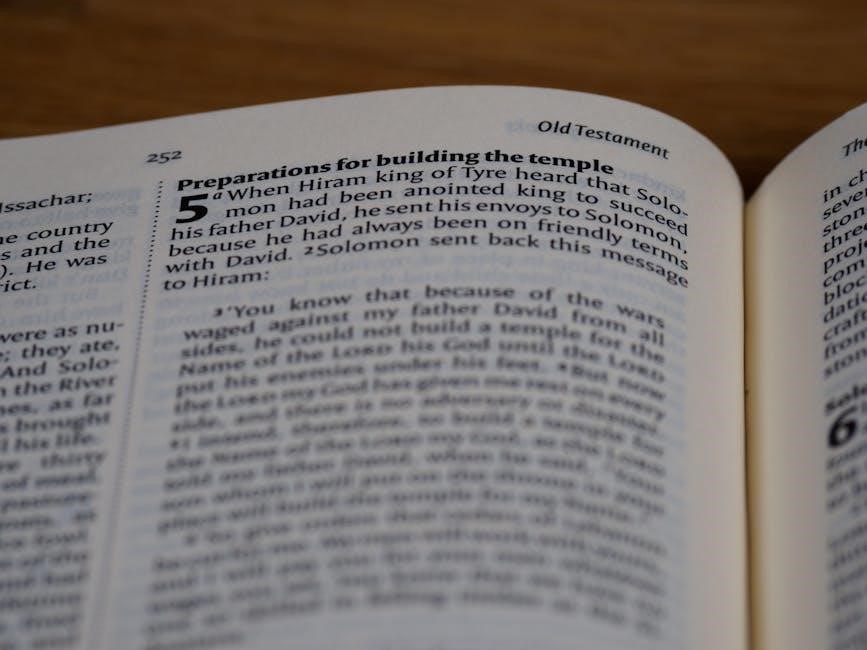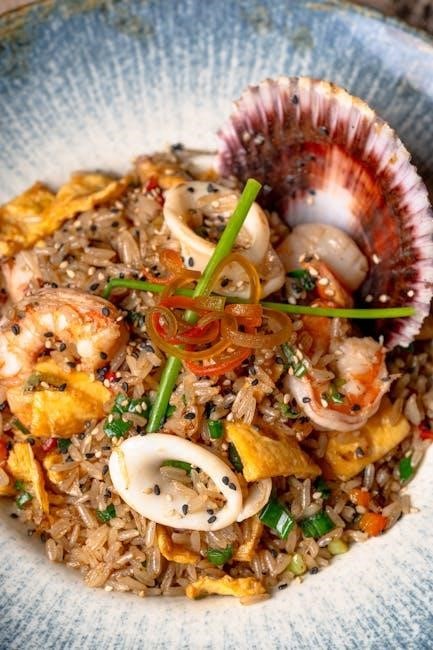up simba david foster wallace pdf
“Up, Simba” is a thought-provoking essay from David Foster Wallace’s collection Consider the Lobster, offering a deep dive into the 2000 McCain campaign, charisma, and media’s role in politics․
1․1 Overview of the Essay’s Themes and Style
The essay “Up, Simba” by David Foster Wallace delves into the intersection of politics, media, and culture, focusing on John McCain’s 2000 presidential campaign․ Wallace’s unique narrative voice blends humor, irony, and philosophical insight, critiquing the superficiality of modern political discourse․ He explores themes such as the charisma of leadership, the disillusionment of young voters, and the media’s role in shaping public perception․ The essay’s style is both accessible and profound, reflecting Wallace’s ability to connect complex ideas with everyday observations․ Through its analysis of McCain’s campaign, “Up, Simba” reveals the broader tensions between authenticity and spectacle in American politics․
1․2 Historical Context of the Essay’s Publication
“Up, Simba” was published in 2005 as part of David Foster Wallace’s essay collection “Consider the Lobster”․ The essay reflects on John McCain’s 2000 presidential campaign, offering a retrospective analysis of the political landscape during the early 2000s․ This period was marked by heightened patriotism post-9/11 and growing skepticism toward political institutions․ The essay also coincided with the rise of reality TV and celebrity culture, which influenced political discourse․ Wallace’s critique of media-driven politics resonated with a nation grappling with the Iraq War and shifting cultural values․ The essay captures the tension between authenticity and spectacle in early 21st-century America, making it a timeless commentary on political culture․

Biography of David Foster Wallace
David Foster Wallace was a renowned American author known for his influential novels and essays, blending humor with philosophical depth, leaving a lasting literary legacy․
2․1 Early Life and Literary Career
David Foster Wallace was born on February 21, 1962, in Ithaca, New York, and grew up in Urbana, Illinois․ His father was a philosophy professor, and his mother taught English, fostering a love for language and ideas early in life․ Wallace excelled academically and athletically, particularly in tennis, which later influenced his writing․ He studied English and philosophy at Amherst College, developing a passion for both literature and analytical thinking․ After graduating in 1985, he pursued a writing career, blending humor, philosophy, and cultural critique․ His early works showcased his unique voice, setting the stage for his literary acclaim․
2․2 Major Works and Contributions to Literature
David Foster Wallace is renowned for his groundbreaking contributions to contemporary literature․ His magnum opus, Infinite Jest, is a postmodern epic that explores themes of addiction, entertainment, and human connection․ In non-fiction, his essay collection Consider the Lobster, which includes “Up, Simba,” showcases his unique blend of humor, philosophy, and cultural critique․ Wallace’s writing often delves into the complexities of modern life, blending dense, layered prose with profound insights․ His work has redefined literary boundaries, influencing a generation of writers with its innovative style and depth․ Wallace’s ability to merge intellectual rigor with accessible storytelling has left an indelible mark on American literature․
2․3 The Significance of “Consider the Lobster” Collection
The “Consider the Lobster” collection is a seminal work in David Foster Wallace’s oeuvre, showcasing his unparalleled ability to blend humor, philosophy, and cultural critique․ The essays within, including “Up, Simba,” reflect Wallace’s unique voice, which balances intellectual depth with accessibility․ This collection is significant for its exploration of American culture, politics, and media, offering trenchant insights into the human condition․ It solidified Wallace’s reputation as a master of non-fiction, blending personal narrative with broader societal observations․ The essays collectively challenge readers to think critically about their world, making the collection a cornerstone of contemporary literary discourse․

Analysis of “Up, Simba”
David Foster Wallace’s “Up, Simba” critically examines John McCain’s 2000 campaign, exploring media portrayal and political image-making․ It bridges political commentary with cultural insight, reflecting on the dynamics between candidates, media, and public perception․
3․1 The Essay’s Focus on John McCain’s 2000 Presidential Campaign
Drawing from his experiences covering John McCain’s 2000 presidential campaign, Wallace examines the candidate’s unique appeal and the media’s role in shaping his image․ McCain, often portrayed as a maverick and political outsider, captivated voters with his authenticity and war hero narrative․ Wallace delves into the contradictions of McCain’s campaign, highlighting how his reputation as a reformer coexisted with traditional political strategies․ The essay captures the tension between McCain’s personal charisma and the broader political machine, offering a nuanced exploration of his candidacy’s rise and eventual decline․ Wallace’s observations reveal the complex interplay between candidate, media, and public perception during this pivotal campaign․
3․2 Exploration of American Politics and Media
In “Up, Simba,” Wallace critically examines the intertwined relationship between American politics and media, particularly during John McCain’s 2000 campaign․ He highlights how the media sensationalizes political narratives, turning candidates into celebrities and campaigns into entertainment․ Wallace argues that this phenomenon alienates voters by reducing complex issues to shallow soundbites․ His analysis reveals how the 24-hour news cycle and pundit culture prioritize ratings over substance, fostering cynicism among the public․ Through a blend of humor and sharp commentary, Wallace exposes the ways in which media shapes political perception, often at the expense of genuine engagement with policy and ideas․
3․3 The Concept of the “Anti-Candidate” in Modern Politics
In “Up, Simba,” Wallace introduces the concept of the “Anti-Candidate,” a political figure who gains traction by rejecting traditional norms of candidacy․ John McCain, during his 2000 campaign, embodies this idea, positioning himself as an outsider challenging the establishment․ Wallace explores how this image attracts voters disillusioned with politics-as-usual, creating a paradox where the Anti-Candidate’s authenticity is both genuine and strategically crafted․ The essay critiques how this archetype resonates in a media-driven culture, where rebellion against the system is often co-opted into the same political machinery it seeks to disrupt․ This duality highlights the tension between public desire for change and the constraints of political reality․

Themes in “Up, Simba”
The essay explores themes of charisma, media influence, and political disillusionment, highlighting the tension between authenticity and stagecraft in modern leadership and voter engagement․
4․1 The Role of Charisma in Leadership
In “Up, Simba,” Wallace examines how charisma shapes public perception of leaders․ John McCain’s 2000 campaign exemplifies this, as his personal narrative and authenticity captivated voters․ Wallace highlights how McCain’s charisma, rooted in his POW history and maverick image, created an emotional connection with audiences․ This contrasts with the polished, media-driven campaigns of other politicians, revealing charisma’s dual role as both a genuine trait and a constructed performance․ The essay suggests that charismatic leaders often succeed by tapping into collective hopes and frustrations, even when their policies lack depth․ This dynamic underscores the tension between substance and image in modern leadership․ Charisma emerges as a powerful yet fragile force in politics․
4․2 The Influence of Television on Political Perception
In “Up, Simba,” Wallace critiques how television shapes political perception, turning campaigns into entertainment․ He argues that TV reduces complex issues to simplistic, emotionally charged narratives, focusing on personality over policy․ McCain’s 2000 campaign is portrayed as a media spectacle, where his “maverick” image, amplified by TV, resonated more than his platform․ Wallace highlights how television creates a false intimacy between politicians and viewers, fostering emotional connections that often overshadow critical analysis․ This dynamic, he suggests, reflects a broader cultural shift toward valuing authenticity and drama over substance in political discourse․ Television’s influence thus becomes a double-edged sword, engaging voters yet distorting their understanding of leadership․
4․3 The Disillusionment of Young Voters
In “Up, Simba,” Wallace examines the disillusionment of young voters with politics, highlighting their detachment from the political process․ He attributes this to the disconnect between the idealism of youth and the cynicism of modern politics․ The 2000 McCain campaign, with its media-crafted image of authenticity, initially captivated young voters but ultimately left them disappointed․ Wallace argues that the political system’s reliance on spectacle and image over substance fosters a cycle of hope and disillusionment․ This disconnect reflects a broader cultural alienation, as young voters struggle to reconcile their ideals with the realities of a system that often prioritizes style over meaningful change․ The essay underscores the tension between political engagement and the erosion of trust in institutions․

Literary Style and Structure
Wallace’s unique narrative voice blends introspection and sharp analysis, creating a deeply personal yet universally relatable exploration of political and cultural phenomena․
5․1 Wallace’s Unique Narrative Voice
David Foster Wallace’s narrative voice in “Up, Simba” is both deeply personal and universally resonant․ His writing style is characterized by a conversational yet introspective tone, which makes complex political and cultural analysis accessible․ Wallace’s ability to weave personal reflections with broader societal critiques creates a unique reading experience․ His voice is marked by a blend of humor, empathy, and intellectual rigor, allowing readers to connect emotionally with his arguments․ This narrative approach in “Up, Simba” not only challenges readers to think critically but also invites them to reflect on their own experiences within the cultural landscape he describes․ His voice remains one of the most distinctive and influential in contemporary essay writing․
5․2 The Use of Irony and Humor in Political Commentary
In “Up, Simba,” David Foster Wallace masterfully employs irony and humor to dissect the complexities of American politics․ His ironic observations highlight the absurdities of political theater, while his humor humanizes the critique, making it relatable․ Wallace uses wit to expose the contradictions in political messaging and the media’s role in shaping public perception․ By blending irony with humor, he creates a tone that is both critical and engaging, allowing readers to confront uncomfortable truths without feeling alienated․ This approach not only enhances the essay’s readability but also underscores the deeper societal issues he addresses, making his commentary both insightful and memorable․
5․3 The Essay’s Length and Complexity
“Up, Simba” is notable for its length and complexity, reflecting Wallace’s meticulous approach to political and cultural analysis․ The essay is extensive, with detailed observations and layered arguments that demand close reading․ Its complexity lies in its depth, blending personal narrative with broader societal critique․ Wallace’s intricate prose challenges readers to engage deeply, offering insights into the 2000 campaign and its cultural context․ The essay’s length allows for a comprehensive exploration of themes, making it a rich, though demanding, work․ Its complexity underscores Wallace’s intellectual rigor and his commitment to exploring nuanced ideas, ensuring the essay remains a significant contribution to political commentary and literary journalism․

Cultural and Social Context
The early 2000s saw a rise in reality TV and celebrity culture, influencing political campaigns․ Young voters felt disillusioned by traditional politics, seeking authenticity․ Media scrutiny intensified, blending entertainment with governance, reflecting societal shifts in perception and engagement with leadership․
6;1 The State of American Culture at the Turn of the Millennium
The turn of the millennium marked a pivotal shift in American culture, characterized by the rise of reality TV, the internet, and a growing obsession with celebrity․ Society became increasingly fragmented, with younger generations seeking authenticity in a hyper-mediated world․ This era saw a blending of politics and entertainment, as campaigns like McCain’s 2000 run were scrutinized under the lens of 24-hour news cycles․ Wallace’s essay captures this cultural zeitgeist, reflecting on how media saturation shaped public perception and political engagement․ The early 2000s were defined by a mix of optimism and disillusionment, setting the stage for the themes explored in “Up, Simba․”
6․2 The Impact of Celebrity Culture on Politics
In “Up, Simba,” Wallace critiques how celebrity culture infiltrated politics, particularly during McCain’s 2000 campaign․ The media’s fixation on McCain’s charismatic “maverick” persona mirrored the Idolization of celebrities, reducing complex political discourse to entertainment․ This phenomenon drew young voters emotionally, yet often distracted from policy substance․ Wallace argues that the commodification of political figures as celebrities undermines genuine engagement, fostering a culture of superficiality․ The essay highlights how media narratives prioritize personality over policy, reflecting a broader societal trend where political figures are marketed like Hollywood stars․ This dynamic reshaped public perception, blurring the lines between politics and entertainment․ Wallace’s analysis remains prescient in understanding modern political culture․
6․3 The Role of the Media in Shaping Public Opinion
In “Up, Simba,” Wallace examines how the media’s narrative shapes public opinion, often prioritizing entertainment over substance․ During McCain’s 2000 campaign, the media crafted a compelling story of the “maverick” candidate, emphasizing charisma and relatability․ This narrative resonated emotionally with voters, particularly younger demographics, fostering a sense of connection․ However, it frequently overlooked detailed policy discussions․ Wallace critiques this phenomenon, arguing that the media’s focus on spectacle transforms politics into a form of entertainment․ This not only influences voter perceptions but also reinforces a culture where political engagement is driven more by personality than policy, raising questions about the depth of democratic discourse․

The Essay’s Reception and Impact
Wallace’s essay garnered critical acclaim for its nuanced exploration of politics and media․ Its influence extended beyond literature, shaping modern political commentary and public discourse significantly․
7․1 Initial Reviews and Critical Reception
Upon its release, “Up, Simba” received widespread critical acclaim for its insightful commentary on politics and media․ Critics praised Wallace’s unique narrative voice, which blended humor with deep political analysis․ The essay was noted for its ability to capture the cultural and political dynamics of the 2000 campaign, particularly McCain’s appeal as an “anti-candidate․” Many reviewers highlighted Wallace’s ability to balance intellectual depth with accessible prose, making the essay both thought-provoking and engaging․ The piece was seen as a standout in the Consider the Lobster collection, further cementing Wallace’s reputation as a master of contemporary nonfiction․ Its reception solidified its place in political and literary discourse․
7․2 The Essay’s Relevance in Contemporary Politics
“Up, Simba” remains strikingly relevant in today’s political landscape, as its themes of media influence, voter disillusionment, and the cult of personality continue to resonate․ The essay’s exploration of how political narratives are shaped by television and celebrity culture aligns with current debates about social media’s role in politics․ Wallace’s critique of the commodification of authenticity in campaigns is particularly prescient, given the rise of performative politics․ The essay’s insights into the tension between political ideals and pragmatic realities also speak to contemporary frustrations with governance․ Its nuanced analysis of voter apathy and the search for genuine leadership offers a timeless commentary on the challenges of modern democracy;
7․3 Influence on Subsequent Political Commentary
“Up, Simba” has left a lasting impact on political commentary, influencing writers to adopt a more nuanced, introspective approach․ Wallace’s ability to blend personal narrative with sharp cultural analysis inspired a generation of commentators to explore the human side of politics․ His critique of media-driven narratives has encouraged a more critical examination of how campaigns are framed and consumed․ The essay’s focus on authenticity and voter disillusionment has resonated with contemporary analysts, particularly in discussions about populism and political theater․ Many subsequent commentators have adopted Wallace’s style of blending humor, empathy, and intellectual rigor, making his work a benchmark for thoughtful political discourse in the digital age․

Comparison with Other Essays in “Consider the Lobster”
“Up, Simba” stands out for its political focus, contrasting with essays like “E Unibus Pluram,” which explores media’s role in culture, and “How Tracy Austin Broke My Heart,” reflecting on celebrity idolization․ While other essays delve into entertainment and personal narrative, “Up, Simba” uniquely examines political spectacle, offering a sharp critique of media-driven campaigns․ Its blend of humor and incisive commentary aligns with Wallace’s broader style, yet its subject matter diverges, showcasing his versatility as a writer capable of bridging political and cultural discourse seamlessly․
8․1 “Consider the Lobster” and Its Themes
In “Consider the Lobster,” Wallace critiques the ethics of boiling lobsters alive, reflecting on human morality and culinary practices․ This essay, unlike “Up, Simba,” focuses on the intersection of food culture and animal consciousness, raising philosophical questions about suffering and consumerism․ Wallace’s humor and empathy shine as he explores the lobster’s experience, challenging readers to confront the ethical implications of their dietary choices․ While “Up, Simba” delves into political spectacle, “Consider the Lobster” offers a poignant meditation on compassion and the unseen lives of non-human beings, showcasing Wallace’s ability to blend the mundane with the deeply philosophical․
8․2 “E Unibus Pluram” and the Influence of Television
“E Unibus Pluram” explores the profound impact of television on American culture and identity․ Wallace examines how TV shapes perceptions of reality, community, and self, arguing that it creates a false sense of connection while fostering isolation․ He critiques the medium’s role in commodifying identity and normalizing consumerism․ The essay highlights the irony of modern life, where individuals seek authenticity through mediated experiences․ Wallace’s analysis reveals how television’s influence extends beyond entertainment, shaping political and cultural narratives․ This exploration of media’s power aligns with themes in “Up, Simba,” offering a deeper understanding of how technology and media shape human experience in contemporary society․
8․3 “How Tracy Austin Broke My Heart” and the Cult of Celebrity
Drawing parallels to “Up, Simba,” “How Tracy Austin Broke My Heart” examines the fetishization of celebrity and the emotional toll of fame․ Wallace reflects on his childhood idolization of tennis prodigy Tracy Austin, critiquing the commodification of talent and the voyeuristic relationship between fans and celebrities․ He explores the tension between public image and private struggle, echoing the themes of authenticity and media manipulation found in “Up, Simba․” Both essays reveal how celebrity culture creates and destroys idols, highlighting the human cost behind the spectacle․ Wallace’s personal and empathetic narrative voice underscores the broader societal critique of our obsession with fame and its consequences․

The Legacy of David Foster Wallace
David Foster Wallace left a profound impact on literature, blending humor with philosophical depth, influencing contemporary writers, and offering unique insights into human connection and modern struggles․
9․1 His Influence on Contemporary Literature
David Foster Wallace’s innovative storytelling and philosophical depth have profoundly shaped contemporary literature, inspiring a generation of writers to explore complex human experiences․ His unique blend of humor, irony, and intellectual rigor redefined narrative styles, encouraging experimentation in fiction and nonfiction alike․ Wallace’s ability to connect deeply with readers through relatable characters and existential themes has made his work a benchmark for authenticity․ His influence is evident in many modern authors who emulate his fearless approach to tackling societal and psychological complexities․ Wallace’s legacy continues to foster a culture of literary innovation, ensuring his impact remains vital in the evolving literary landscape․
9․2 The Enduring Relevance of His Work
David Foster Wallace’s work remains remarkably relevant due to its profound exploration of universal human experiences․ His writing captures the complexities of modern life, delving into themes like loneliness, entertainment, and the search for connection․ Essays such as “Up, Simba” continue to resonate as they critique American culture and politics with uncanny prescience․ Wallace’s ability to blend humor with philosophical depth ensures his work appeals to diverse audiences․ His insights into media’s influence and the human condition retain their urgency, making his essays timeless․ This enduring relevance solidifies his legacy, ensuring his work continues to inspire and challenge readers in contemporary society․

9․3 The Impact of His Essays on Political and Cultural Discourse
David Foster Wallace’s essays, including “Up, Simba,” have significantly influenced political and cultural discourse by offering trenchant critiques of American society․ His exploration of media’s role in shaping political narratives remains relevant, particularly in today’s hyper-mediated world․ Wallace’s unique ability to merge humor with philosophical insight has inspired a new generation of writers and thinkers․ His work challenges readers to critically examine the intersection of politics, culture, and personal identity․ By questioning the performative nature of politics, Wallace’s essays encourage deeper reflection on democracy and leadership․ His influence is evident in contemporary discussions about authenticity, media saturation, and the complexities of public discourse․
David Foster Wallace’s “Up, Simba” offers profound insights into politics, media, and culture, highlighting the complexities of modern discourse․ His work remains timeless and influential․
10․1 Summary of Key Points
In “Up, Simba”, David Foster Wallace examines the 2000 presidential campaign of John McCain, exploring themes of political authenticity and media influence․ The essay delves into the tension between McCain’s image as an “anti-candidate” and the corrupting forces of modern politics; Wallace critiques the media’s role in shaping public perception, highlighting how television and journalism often prioritize spectacle over substance․ He also reflects on the disillusionment of young voters, who struggle to reconcile their ideals with the realities of political compromise․ Through his unique narrative voice, Wallace blends humor, irony, and philosophical depth, offering a nuanced critique of American democracy and its cultural context․
10․2 Final Thoughts on the Essay’s Significance
“Up, Simba” remains a profound commentary on American politics and culture, offering insights into the intersection of media, identity, and leadership․ David Foster Wallace’s unique voice captures the complexities of modern democracy, revealing both the allure and disillusionment of political engagement; The essay’s exploration of John McCain’s campaign serves as a microcosm for broader societal themes, such as the commodification of authenticity and the role of charisma in politics․ Wallace’s work continues to resonate, providing a nuanced perspective on the challenges of maintaining individuality within the spectacle of contemporary politics․ His legacy as a cultural critic is cemented through his ability to blend humor, irony, and philosophical depth․










